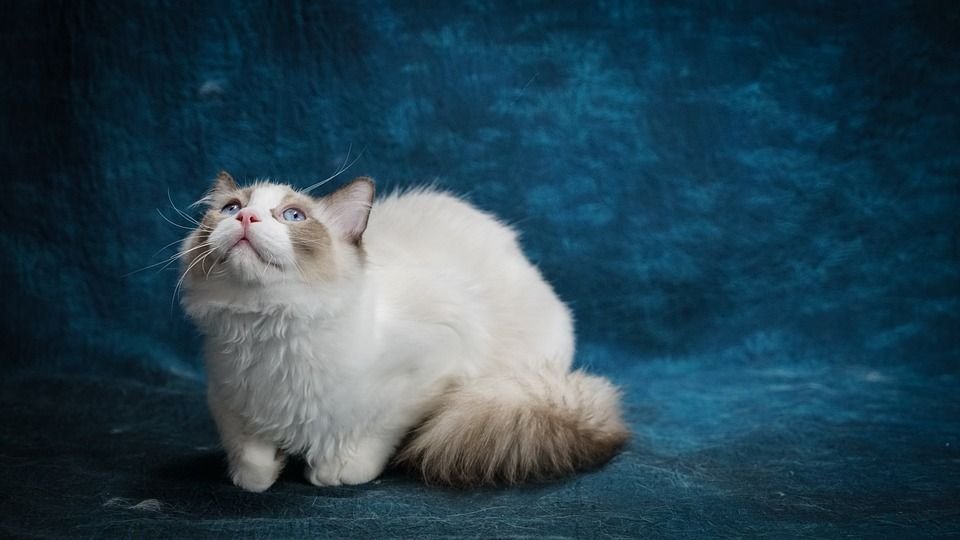Cat lovers often familiarize themselves with the renowned Ragdoll breed’s popularity. Ragdoll cats have striking, pointed coloration. They also have plush coats and gentle personalities. This has captured the hearts of many. But have you ever wondered why they’re called “Ragdolls”? In this article, we’ll explore the fascinating history behind the Ragdoll breed name. We’ll also explore what makes these cats so special.
The Origin of the Ragdoll Breed Name
American breeder Ann Baker developed the Ragdoll breed in the 1960s. Baker’s journey began with a cat named Josephine, a domestic longhair cat that a car had hit. A Birman-like male cat sired Josephine’s kittens.
They had a very calm and docile temperament, even when handled. Intrigued by these traits, Baker set out to create a new breed that had them. Through selective breeding, Baker developed the Ragdoll breed.
The Cat Fanciers’ Association (CFA) granted official recognition in 1971. The breed’s name is “Ragdoll.” It reflects the cats’ tendency to go limp and relaxed when picked up, like a ragdoll toy.

Why Do Ragdoll Cats Go Limp?
Ragdoll cats tend to go limp when people pick them up. This behavior has earned them the nickname “ragdoll cats.” The trait comes from the breed’s calm and docile temperament. Many people believe that Josephine, the founding mother cat, passed it down.
Many believe that the “ragdoll flop” remains a remnant of the kitten reflex. Kittens go limp when picked up by their mothers. This makes carrying them around easier. Ragdoll cats have kept this reflex into adulthood. This is likely due to selective breeding by Ann Baker, who developed the Ragdoll breed in the 1960s.
However, it’s important to note that not all Ragdoll cats will go completely limp when picked up. The level of “floppiness” can vary by cat. It depends on their personality and temperament. Some Ragdolls may resist at first before relaxing. Others may never exhibit this behavior.
As a Ragdoll cat owner, I’ve had the pleasure of experiencing this unique trait firsthand. My Ragdoll, Loki, is a perfect example of the breed’s affectionate and trusting nature. Whenever I pick him up, he immediately goes limp and relaxed. He exposes his belly and lets me cuddle him like a ragdoll. It’s a heartwarming experience that never fails to bring a smile to my face.
At the same time, I’ve learned that Ragdoll cats differ in their characteristics. My other Ragdoll, Luna, is a bit more independent and less inclined to go limp when picked up. She enjoys it when she receives pets and cuddles, but only on her terms. I’ve found that respecting her boundaries. Letting her start affection has built a strong bond between us.
The Unique Characteristics of Ragdoll Cats
Ragdoll cats have a reputation for their large size. They have plush coats and distinctive pointed colors. They come in a variety of colors and patterns, including seal, chocolate, lilac, blue, and cream. Females reach a weight of 8-15 pounds at maturity, males 12-20 pounds or more.

Ragdoll Cats as Companion Animals
People prize Ragdolls for their physical attributes. They are also prized for their friendly, loving, and easygoing personalities. People often call them “dog-like cats” or “puppy-like cats.” This is because they tend to follow people around. They are friendly to handling and not aggressive towards other pets. Ragdolls make great family pets and thrive on human interaction and attention.
Conclusion
The Ragdoll breed’s name reflects the cats’ tendency to go limp when handled. This trait stems from their calm and docile nature. Not all Ragdolls act this way. But it’s a key trait of the breed. It adds to their popularity as loving pets. Ragdoll cats have a distinctive look. They are friendly and gentle. They have captured the hearts of cat lovers worldwide.

Hey guys, My name is Simon Smith. I’m from Canada and live near Victoria
I live with my sweet family and have 20+ Ragdolls of different types. I love them as my children. My profession is as a hotel manager.
I love to keep Ragdolls and grow their breeder case. I have 7 years of experience.
I’m an expert in cat care. So, I’m here to provide you with new information about my cats daily. This is my blog website, so I request that you kindly visit our site daily.
If you’re a Ragdolls lover and you have any questions or confusion about cats, text me on the Contact Us page or Gmail.
Thank u
